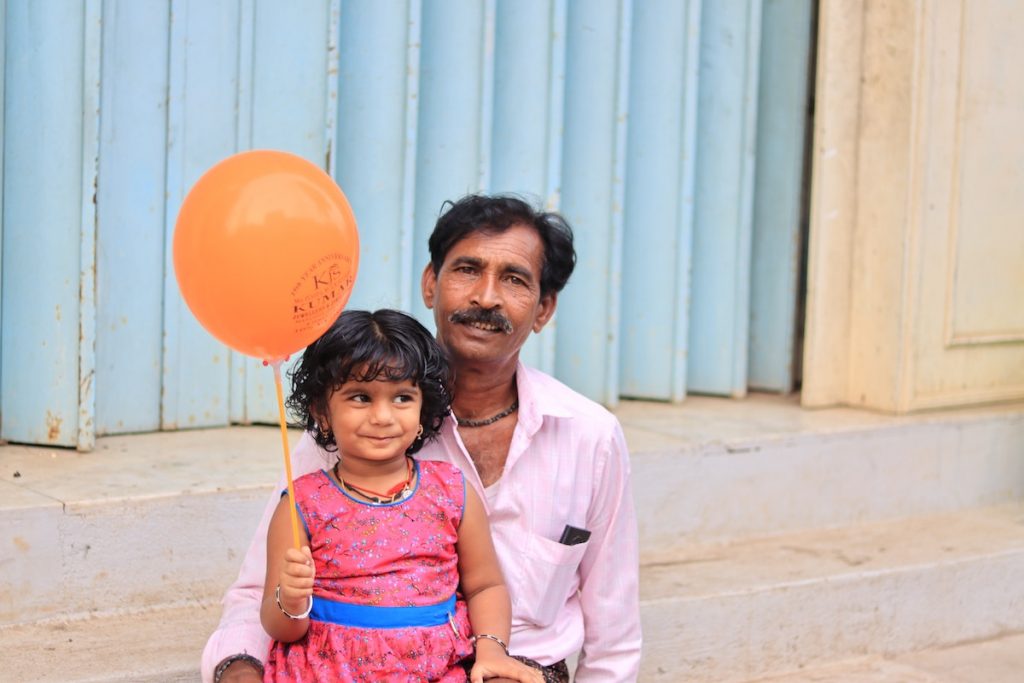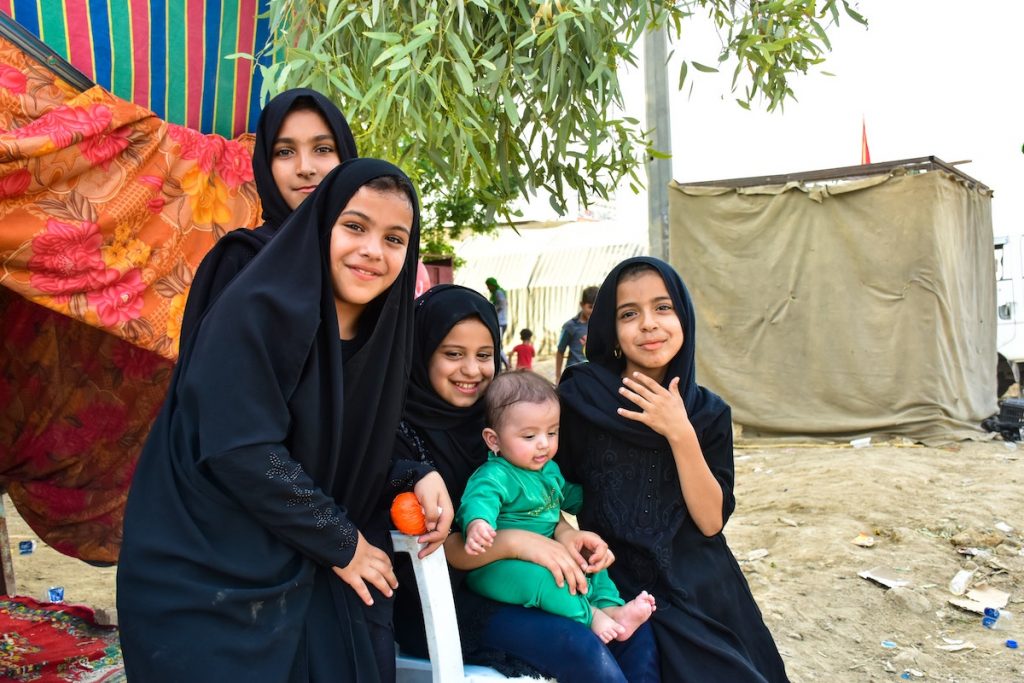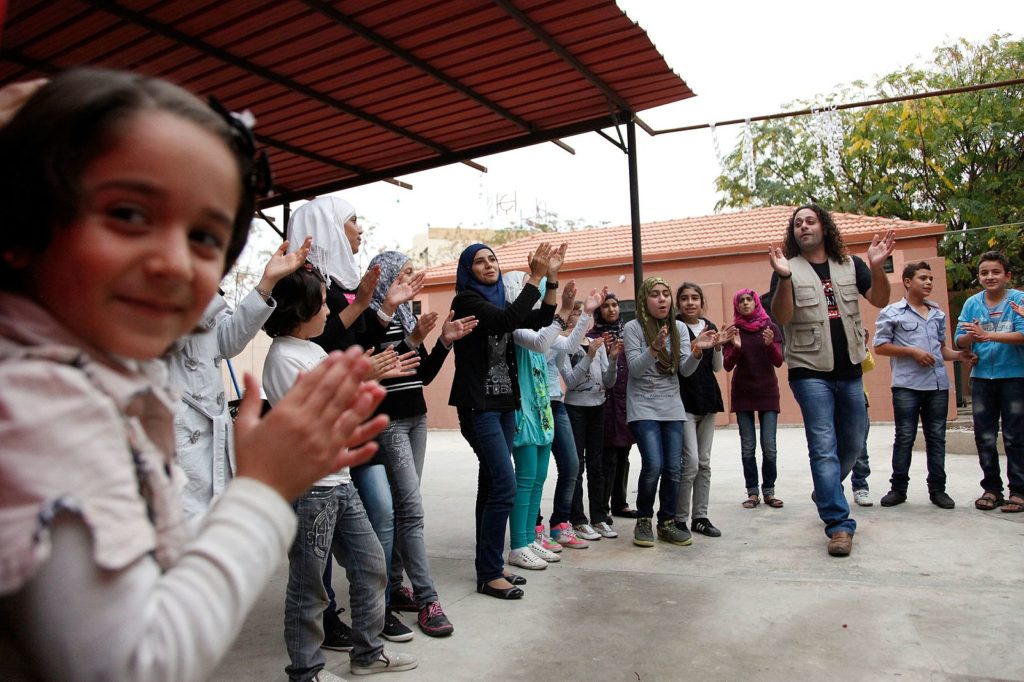
Global figures suggest that almost half of the people in international protection (i.e., asylum seekers and refugees) are under the age of 18 (UNHCR, 2022). These young people commonly experience adversities which push them from their homes and force them to undertake risky and often unregulated passages to protection. After arriving in a receiving country, they often experience further distress: psycho-socially and economically. Together, these factors set the scene for the high rates of mental health disorders these youth face (Blackmore et al., 2020).
The gap between mental health care demand and need is universally wide. However, in low- and middle-income countries (LMICs) – hosting three quarters of the people in international protection – the chasm is widest (UNHCR, 2022), with 90% of people not having access to care (Wang et al., 2007). To address this gap, task-shifting involves capacity building among community representatives to deliver mental health programmes. Promising results have been found in adults (Rahman et al., 2016), but there is no quality evidence on this work with youth.
This randomised control trial (RCT) evaluated the effectiveness of a time-limited and culturally-adapted group intervention for Syrian refugee youth in Jordan, which was delivered by non-specialists. The Early Adolescent Skills for Emotions (EASE) program was compared against improved care as usual (ICU) protocol. The EASE program’s effectiveness was determined by its impact on a range of mental health indicators.

This study is among the first to explore the effects of a simple community capacity-building programme on the mental health of refugee youth in Jordan.
Methods
Intervention design
This RCT compared the effects of EASE (7 youth and three caregiver sessions) and ICU (a single family session) on 10-14-year-old Syrian teenagers (n=471) in psychological distress. The EASE program included psychoeducation, breathing strategies, behavioural activation, problem-solving, and parenting skills (Dawson, 2019). This program was then adapted to the local culture (Brown et al., 2020). Facilitators were recruited from the local community and had no specialist mental health training, but received supervision post-training. The ICU focused on reflecting on the baseline assessment and rudimentary coping skills.
Randomisation procedure
The study’s design was single-blind. This means participants and facilitators knew what condition they were in, but assessors did not. Randomisation was overseen by persons independent of the study.
Key outcomes
Primarily, the researchers were focused on youths’ self-reports of psychological distress (measured by the PSC-35 and including symptoms of internalising, externalising, and attention problems). The secondary outcomes included youths’ self-reports of depression, PTSD, sense of belonging, and daily functioning, as well as caregivers’ reports on their child’s psychological distress, the child’s exposure to trauma, their own psychological distress, and parenting strategies. All outcomes (except daily functioning) were evaluated using a tool which had undergone previous psychometric testing. Each outcome was assessed at baseline, midline (9-weeks), and endline (3 months).
Statistical analyses
A power analysis was used to determine the number of participants the study required. The characteristics at baseline of those who dropped and remained in the study were compared while controlling for multiple comparisons with a Bonferroni adjustment. No differences were found, so the missing data was treated as random. The researchers then used intent to treat analyses and a mixed linear model to study the effects of each treatment (at baseline, post-treatment, and follow-up). The initial analyses focused on the effect of treatment on internalising as well as secondary outcomes. The subsequent analyses were used to determine if treatment effects were The final analysis tested if EASE had an indirect effect on youths’ levels of internalising via an effect on parenting strategies (i.e., whether mediation occurred).
Results
At baseline, 185 youths were randomised to EASE and 286 to ICU. No significant differences in socio-demographics were found between the groups. The mean age was 11.6 years and the median number of exposures to traumatic events was 6.89.
Treatment engagement and effects
- The teenagers attended a mean of 4.67 of the EASE programs (SD = 2.79). On average, caregivers attended 1.67 sessions of the EASE sessions (SD = 1.22). At endline, drop-out was estimated at 10%.
- At 3-months, participating in EASE (compared to ICU) was associated with significantly greater reductions in:
- youth levels of internalising (estimated mean difference 0.69, 95% CI 0.19 to 1.19; p = 0.007; effect size, 0.38)
- caregivers’ levels of psychological distress (estimated mean difference 1.95, 95% CI 0.71 to 3.19; p = 0.002)
- caregivers’ use of inconsistent parenting strategies (mean difference 1.54, 95% CI 1.03 to 2.05; p < 0.001)
- “But there were no differences for
- PSC-externalising (estimated mean difference 0.24, 95% CI −0.43 to 0.91; p = 0.49; effect size, −0.10),
- PSC-attentional problem (estimated mean difference −0.01, 95% CI −0.51 to 0.54; p = 0.97; effect size, −0.01) scores,
- or on depression, posttraumatic stress, well-being, functioning, or school belongingness.”
- Prior trauma-exposure was not found to alter the significance or direction of these effects. Youth participants who presented with severe psychological distress at baseline, experienced significantly stronger reductions in internalising and caregivers’ use of inconsistent parenting, than those who presented with less severe psychological distress. For this subset of participants, the EASE program had no effect on caregivers’ psychological distress. A mediation analysis showed that inconsistent discipline strategies partially mediated the relationship between EASE and youth psychological distress. These results suggest that a part of EASE’s effect on youth psychological distress is attributable to its impact on caregivers’ use of inconsistent discipline. No other parenting strategies were found to mediate this relationship.

EASE was effective for young people with problems internalising and caregivers struggling to manage their own emotions and approach to parenting.
Conclusions
The study shows that a short, group-based, culturally fit intervention (EASE), which was delivered by non-specialists, reduced internalising in refugee youth to a greater degree than ICU. It also finds that EASE has significant effects (compared with ICU) on caregivers’ psychological distress and the use of inconsistent parenting strategies. There was no difference in EASE and ICU on any other outcomes measured in the study. The f analysis showed that EASE was associated with less inconsistent parenting behaviours, and this led to less internalising in youth.

Community capacity-building programmes may have promising results for refugee youth populations globally.
Strengths and limitations
The study shows that highly specialist qualifications and individualised models of care are not the only option to help refugee youth in LMICs manage their anxiety. It is among the first to evaluate the utility of a group-based and manualised approach to care, drawing on community resources in a low-resource setting. Its findings have promising implications for the accessibility and effectiveness of psychological care in LMICs. Notably, the study shows how effective this approach can be when it is adapted to the local context. The researchers’ inclusion of an ICU comparison group adds further gravitas to their findings, as waitlist controls have sometimes been found to exaggerate treatment effects (Cristea, 2014). Moreover, appropriate detail on the research methods is provided in the peer-reviewed paper. They use a power analysis to determine their appropriate sample size, describe their procedure of randomisation, use intent to treat analyses, and outline their testing methods and how they manage missing data. The information provided allows us to deem the study high quality and allows replication.
One limitation of the study was that all participants were aware of the treatment condition to which they had been assigned. Those in EASE knew they were getting more sessions and different content than those in ICU. Different expectations about treatment outcomes could have inflated the positive effects of the EASE program. Future research might look at comparing EASE with a more equivalent intervention even in terms of frequency or intensity. Lastly, by looking at how much participants engaged in the treatment, one can calculate that, on average, teenagers attended 67% of sessions and caregivers attended 56% of sessions. As many participants didn’t attend all sessions, it would have been interesting for the authors to assess which parts of the treatment were most influential on the outcomes.

The evaluation of the EASE programme in Jordan is an important contribution to a field that is lacking in evidence despite the current socio-political context.
Implications for practice
EASE is one of the first well-evaluated and effective task-shifting mental health care interventions to be established for refugee youth. Practitioners working with refugee youth could benefit from reviewing the study protocol (Bryant et al., 2022; Dawson et al., 2019) and its methods for cultural adaptation (Brown et al., 2020).
Those working in communities with refugee youth who have concerns related to psychological distress and internalising symptoms, could benefit from upskilling in EASE (Bryant et al., 2022; Dawson et al., 2019). Practitioners can then help non-specialists upskill and could increase the accessibility of mental health care by providing training and supervision. As a counselling psychologist in Ireland’s National Centre for the Rehabilitation of Victims of Torture, I welcome evidence on task-shifting approaches to care. I am proud of the work I do and the relationships I have built with refugees from around the world. However, our waitlists are too long and I am concerned for those who aren’t reached. Increasingly, I know we need to look for effective ways to move beyond an individualised model of care. This is why I also work on a project called REFUGE-ED which is co-creating, implementing, and evaluating task-shifting approaches to care for refugees and migrants across Europe.
My hope is that this article (and the EASE study) encourages implementers to look for novel and effective approaches to increase the accessibility of care for the communities they support.

Non-specialists in low- and middle-income settings can meaningfully help refugee youth with symptoms of internalising and improve parenting strategies.
Statement of interests
Katie McQuillan is a counselling psychologist and post-doctoral research fellow working in the field of mental health and psycho-social care for asylum seekers and refugees across the lifespan. As a practitioner, she provides psychological therapy to adult asylum seekers and refugees who have experienced torture. As a researcher, she coordinates the monitoring and evaluation of the REFUGE-ED project. She works both within Ireland’s National Centre for the Rehabilitation of Victims of Torture and the Centre for Global Health, Trinity College Dublin. Dr. Bosqui (referenced in this article) is an assistant professor at the Trinity Centre for Global Health.
Primary paper
Bryant, R. A., Malik, A., Aqel, I. S., Ghatasheh, M., Habashneh, R., Dawson, K. S., Watts, S., Jordans, M. J. D., Brown, F. L., van Ommeren, M., & Akhtar, A. (2022). Effectiveness of a brief group behavioural intervention on psychological distress in young adolescent Syrian refugees: A randomised controlled trial. PLoS Med, 19(8), e1004046. https://doi.org/10.1371/journal.pmed.1004046
Other references
Blackmore, R., Boyle, J. A., Fazel, M., Ranasinha, S., Gray, K. M., Fitzgerald, G., Misso, M., & Gibson-Helm, M. (2020). The prevalence of mental illness in refugees and asylum seekers: A systematic review and meta-analysis. PLoS Med, 17(9), e1003337. https://doi.org/10.1371/journal.pmed.1003337
Brown, F. L., Aoun, M., Taha, K., Steen, F., Hansen, P., Bird, M., Dawson, K. S., Watts, S., El Chammay, R., Sijbrandij, M., Malik, A., & Jordans, M. J. D. (2020). The Cultural and Contextual Adaptation Process of an Intervention to Reduce Psychological Distress in Young Adolescents Living in Lebanon. Front Psychiatry, 11, 212. https://doi.org/10.3389/fpsyt.2020.00212
Bryant, R. A., Malik, A., Aqel, I. S., Ghatasheh, M., Habashneh, R., Dawson, K. S., Watts, S., Jordans, M. J. D., Brown, F. L., van Ommeren, M., & Akhtar, A. (2022). Effectiveness of a brief group behavioural intervention on psychological distress in young adolescent Syrian refugees: A randomised controlled trial. PLoS Med, 19(8), e1004046. https://doi.org/10.1371/journal.pmed.1004046
Cristea, I. (2014). It’s all in the control group: wait-list control may exaggerate apparent efficacy of CBT for depression. The Mental Elf. Retrieved 26/03/23 from https://www.nationalelfservice.net/treatment/cbt/its-all-in-the-control-group-wait-list-control-may-exaggerate-apparent-efficacy-of-cbt-for-depression/
Dawson, K. S., Watts, S., Carswell, K., Shehadeh, M. H., Jordans, M. J. D., Bryant, R., Miller, K. E., Malik, A., Brown, F. L., Servilli, C., & van Ommeren, M. (2019). Improving access to evidence-based interventions for young adolescents: Early Adolescent Skills for Emotions (EASE). World Psychiatry 18, 105-107. https://doi.org/https://doi.org/10.1002/wps.20594
Rahman, A., Hamdani, S., Awan, N., Bryant, R., DAwson, K., Khan, M., Azeemi, M., Akhtar, P., Nazir, H., Chiumento, A., Sijbrandij, M., Wang, D., Farooq, S., & van Ommeren, M. (2016). Effect of a multicomponent behavioral intervention in adults impaired by psychological distress in a conflict-affected area of Pakistan: A randomized clinical trial. JAMA,316, 2609-2617. https://doi.org/10.1001/jama.2016.17165
UNHCR. (2022, 22/10/2022). Refuge Data Finder. UNHCR. Retrieved 04/03/2023 from https://www.unhcr.org/refugee-statistics/
Wang, P. S., Angermeyer, M., Borges, G., Bruffaerts, R., Tat Chiu, W., DE Girolamo, G., Fayyad, J., Gureje, O., Haro, J., Huang, Y., Kessler, R., Kovess, V., Levinson, D., Nakane, Y., Oakley Brown, M., Ormel, J., Posada-Villa, J., Aguilar-Gaxiola, S., Alonso, J., . . . Ustün, T. (2007). Delay and failure in treatment seeking after first onset of mental disorders in the World Health Organization’s World Mental Health Survey Initiative. World Psychiatry 6, 177-185.
Photo credits
- Photo byأخٌفيالله on Unsplash
- Photo by Ra Dragon on Unsplash
- Photo by Shubham Dhage on Unsplash
- Photo by Benjamin Voros on Unsplash
- Photo by Manoj Kulkarni on Unsplash
